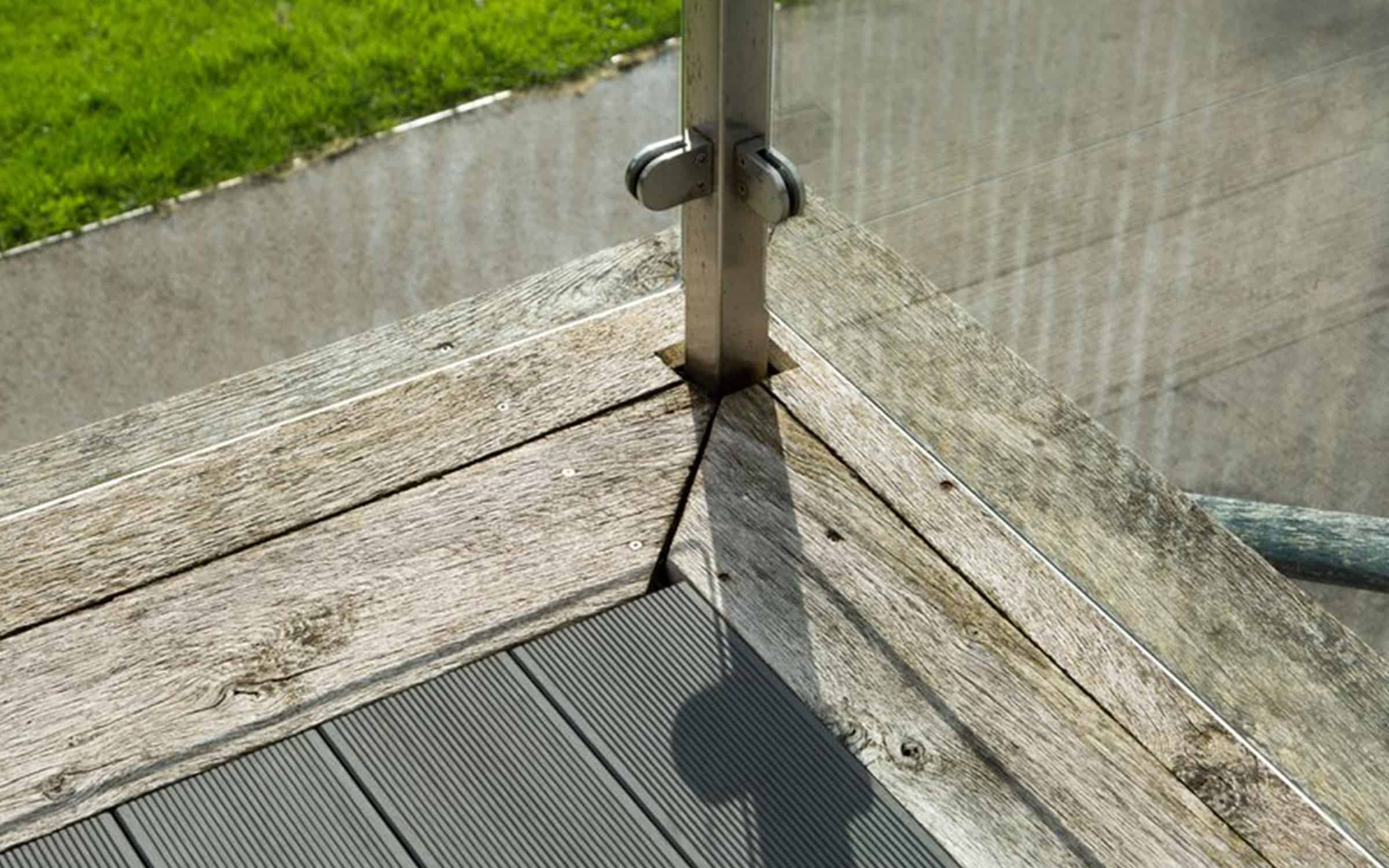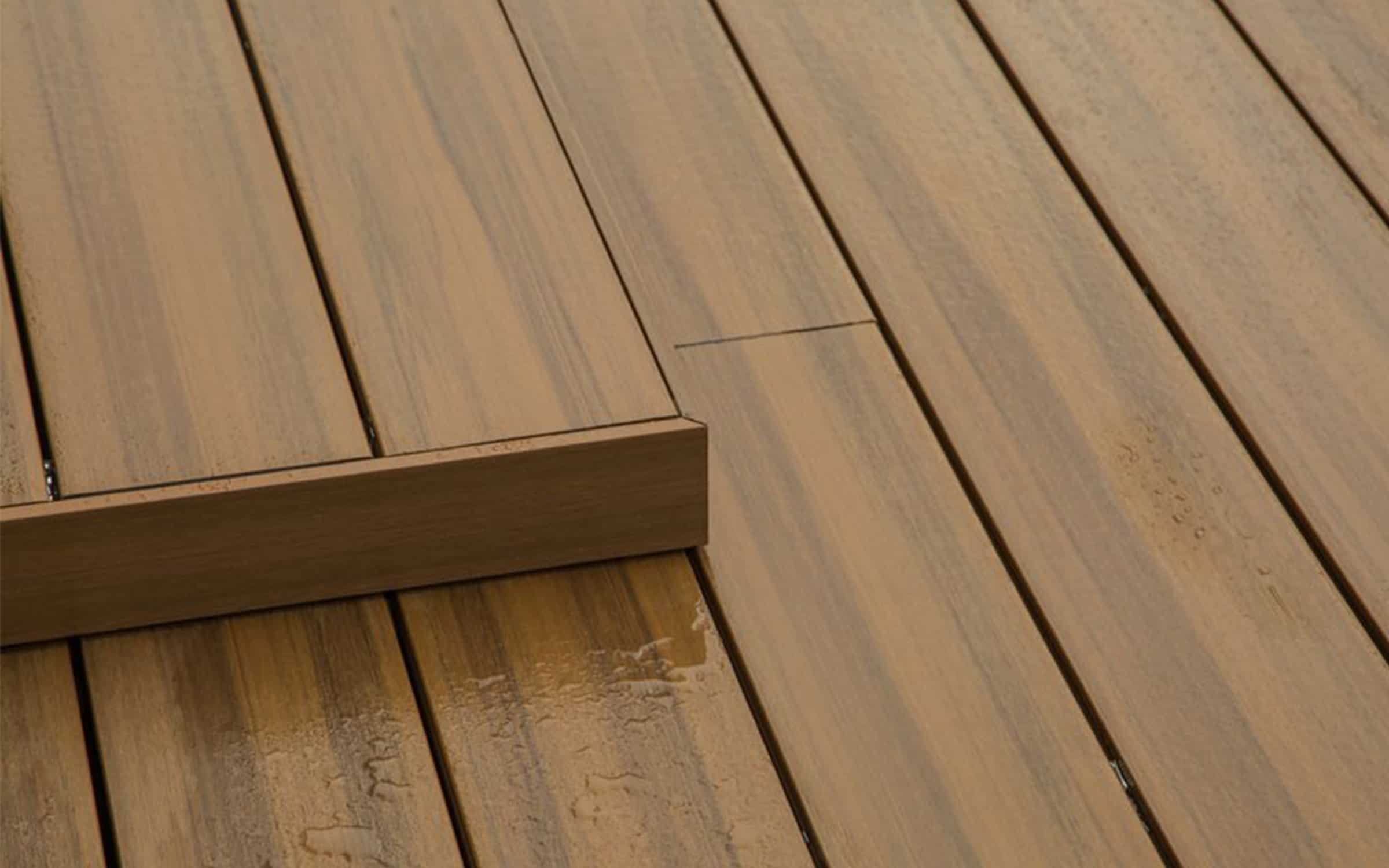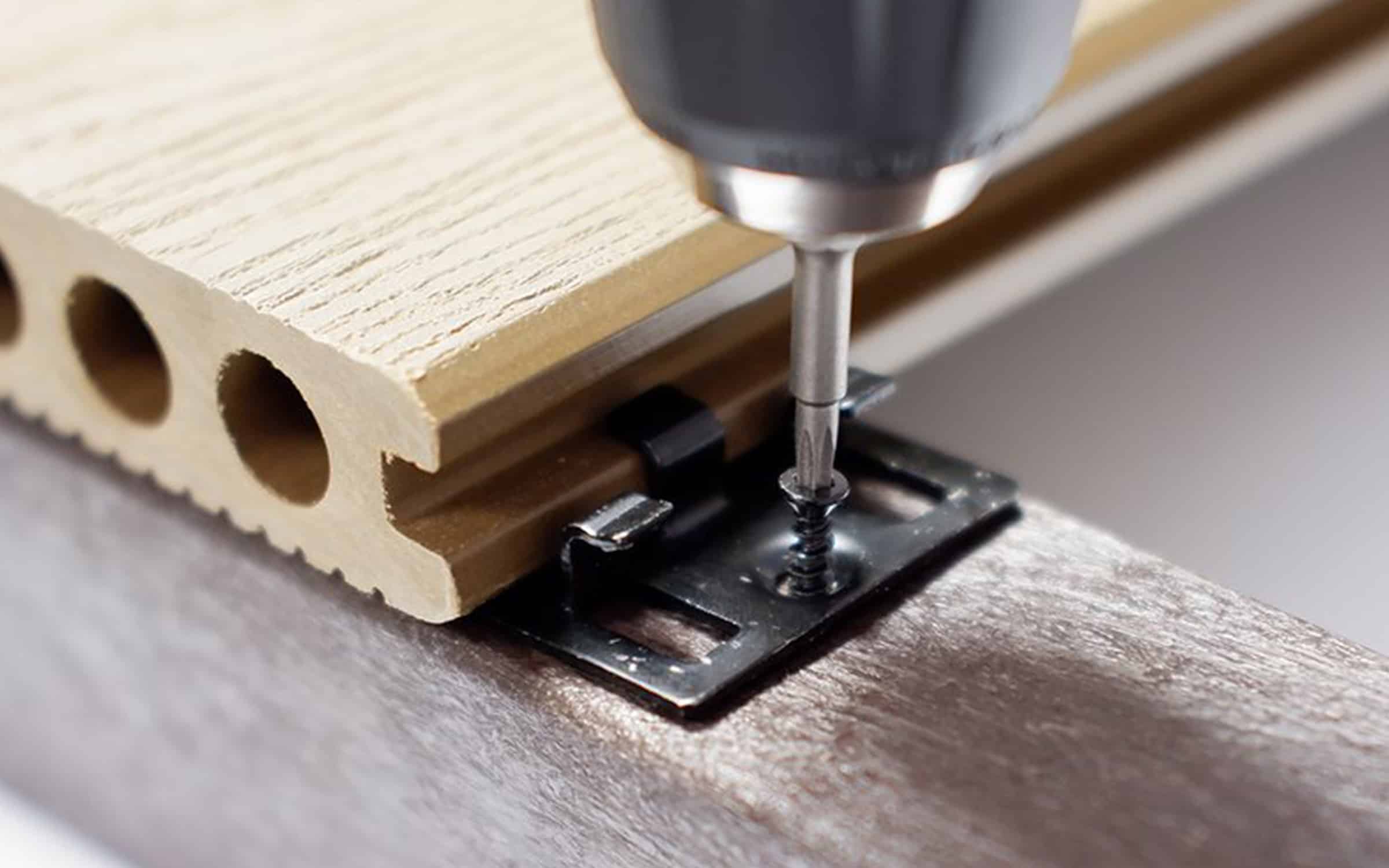The benefits of installing NeoTimber® decking in your garden are clear, but how does it compare to timber, does composite decking warp?
Composite decking is a relatively recent innovation. It was created as an alternative to timber, why? If you have ever driven past Chesterfield and seen its crooked spire, you will have seen first-hand the results of under-estimating the consequences of timber warping. The spire itself was built from wood with a wooden shingle roof. Once the shingles needed replacing, they were replaced with over 30 tonnes of lead shingles. This extra weight, combined with unequal exposure to sunlight, has caused to the whole spire to twist to its current crooked shape.

Because timber is so prone to warping, many people are choosing to install composite decking. However, even composite timber is prone to a degree of warping. In this article, we investigate the differences in the way that timber and composite warp and how to install your composite deck to avoid this.
Why Does Timber Warp?
The process of warping happens when lumber absorbs moisture from the air. This causes timber to expand. As it dries and the moisture in the air reduces, the lumber contracts again. This process is called the Equilibrium Moisture Content (EMC) and can vary vastly dependent upon the type of timber, the cut of the wood and the conditions in which the timber is stored.
The EMC process is not a one-off event, it can occur many times in the lifetime of a piece of timber. Timber can be sourced from various sections of a tree. Dependent on the cut, plain sawn, quarter sawn, live sawn or rift sawn, different parts of the tree will be utilised in a finished plank. Because trees grow steadily over time, different sections of the wood will have varying densities, for instance the heartwood will be denser and more solid than the outer layers. This means that it absorbs and expels moisture at varying rates, as one section dries quicker than another it can cause a twisting or warping of the timber.
Why Is Composite Decking Warp-Resistant?
Composite decking is made from multiple shavings of wood fibre and plastic polymers, being combined and bound together in a mould to create a composite material. Timber has a very simple cell structure which is interconnected. Therefore, what affects one section of timber will have a knock-on effect on another.

Composite wooden decking has a far more complex cell structure. The many thousands of individual wood fibres incorporated into composite timber, act independently with the fibres being made from all sections of the tree, no one section is specifically denser than another, therefore composite timber dries at a predictable, consistent rate. The addition of plastic polymers into the mix further protects the composite material by coating the wood fibres, giving water-resistant properties. In addition to the engineered low water absorption rate, our purpose designed fixing system locks deck boards in place, preventing twisting, warping and bowing.

Installing your composite decking correctly by using the correct fixings and preparing your subframe in the correct manner can have a significant impact on its long-term resistance to warping.
Reasons Why Composite Decking Can Warp
As discussed above, composite wood is comprised of wood fibres and plastic polymers. All organic materials will be subject to a degree of moisture absorption and therefore warping. This process is limited by the addition of the plastic polymers. However, the main reason that warping can occur is down to poor installation. Our comprehensive installation guide is designed to help you avoid some common mistakes and protect your boards.
Our clip fixing system slots into a groove built into the boards. Allowing a 3mm or 6mm gap between boards, gives the part-organic boards the room to expand and contract naturally with changes in weather without compromising the integrity of any of the other boards.
Whilst it may be tempting to screw boards down, screw holes will expand and contract at a different rate to the rest of the board and this can lead to splitting and cracking of the board. Additionally, all NeoTimber® decking should be installed with a 1% fall to allow for drainage. A completely level deck creates an excess of standing water, leading to accelerated water absorption, warping and rotting.
Need Further Support or Advice?
If you’ve still got questions that have not been answered here, or you would like additional advice,
support or assistance then please give one of our friendly experts a call and we’ll be happy to help.
Just give us a call on 01530 382 180.
